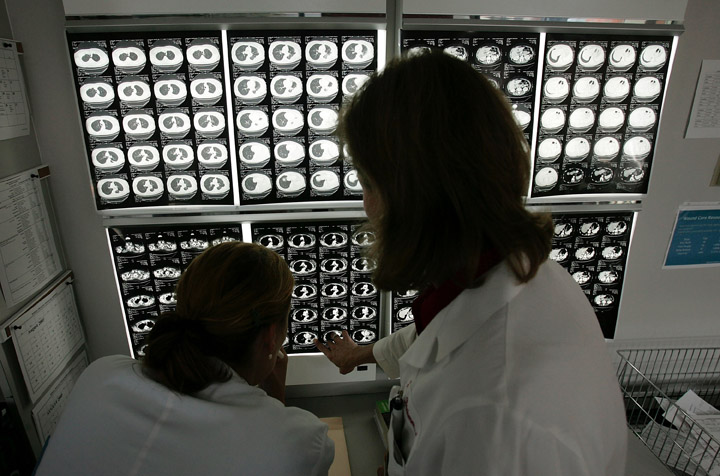TORONTO – A Canadian doctor is combining two trial cancer therapies in to a new treatment that he says will deliver a “one-two punch” to the illness.

“It’s not a matter of if it’ll go into the clinic, it’s a matter of when and that to me is the basis of my excitement,” Dr. Robert Korneluk, one of the most senior scientists at the Children’s Hospital of Eastern Ontario, told Global News.
Korneluk says the treatment first rips the guts out of cancer cells, knocking the disease to its knees before it’s wiped out by a second therapy.
Both of these burgeoning cancer therapies are in clinical trials now. As standalone options, they aren’t as potent, but Korneluk and his collaborators hope to test the two treatments in tandem.
And both parts of the combination therapy have Canadian fingerprints all over them.
READ MORE: Canada-U.S. team develop ‘sharp-shooter’ drug targeting several cancers
Almost 20 years ago in 1995, Korneluk was working on cloning genes that were common in muscular dystrophy. Instead, he stumbled upon a set of genes – called IAPs – that became a hotbed of science. The implications were widespread: scientists wondered if these genes could be manipulated to help with treating cancer, Parkinson’s disease or even eye diseases.
Pharmaceutical companies got to work on developing drugs that could target these cancer-causing genes. And about a decade after his discovery, Korneluk says that there are a handful of therapies in clinical trials right now. They’re meant to help cancer cells self-destruct under stress.
Meanwhile, oncolytics – or the use of viruses that infect and kill cancer cells – also became a growing field of study.
“They were the magic bullet, they kill tumour cells right next to a normal cell, leaving the normal cell alone,” Korneluk said.
READ MORE: 7 findings about Canada’s best and worst cancer-fighting cities
Worldwide evidence is suggesting that these immunotherapies are promising, but Korneluk says his team is the first to pair the two treatments together.
Their theory is that the drugs target the cancer-causing genes, “pulling the plug” on them, while the oncolytics give the dead tumour cells a fatal blow.
About three years ago, Korneluk and his collaborators began testing on tissue models, animal models and even patient sample cells. It’s worked so far: in some cases, tumours required 10,000 times less virus to kill a cancer cell when the IAP drugs were involved.
READ MORE: 6 Canadian game-changing ideas for global health care
Combining cancer therapies is becoming commonplace, but Korneluk notes that these two therapies are gentler than others.
For starters, they don’t come with the nasty side effects of chemotherapy. Because oncolytics rely on viruses, patients encounter flu-like symptoms, like a fever, chills and aches.
“I’m beginning to think that this will one day emerge as a very important standard of care in treating cancer. The way we’ll know that is to facilitate clinical trials,” Korneluk told Global News.
READ MORE: Snapshot of health care in Canada
The CHEO team isn’t sure if there are specific cancers that are worth zeroing in on — that would also be part of the testing.
His ideal patient would be someone who hasn’t tried many treatments beforehand. The disease can strengthen as it fights other therapies.
“It gets hard to kill them. (Our combination) is like pulling the plug and giving it a tap with a mallet. The current chemotherapies are using a sledgehammer,” Korneluk explained.
READ MORE: 5 medical breakthroughs that changed health care in 2013
It could take about two years to get the green light from Health Canada to proceed. He also needs funding.
But Korneluk is determined to see these clinical trials through.
“I’ve had too many friends and family die of cancer and nothing’s happening. I know there’s a lot of research going on — I do believe this is major and it deserves to be out there,” he told Global News.
His complete findings were published Monday in the journal Nature Biotechnology.
carmen.chai@globalnews.ca




Comments